Media Center: Article
Slave ship Amistad helps Stamford middle schoolers examine racism, resistance, history
Stamford Advocate | May 9, 2022
By Verónica Del Valle
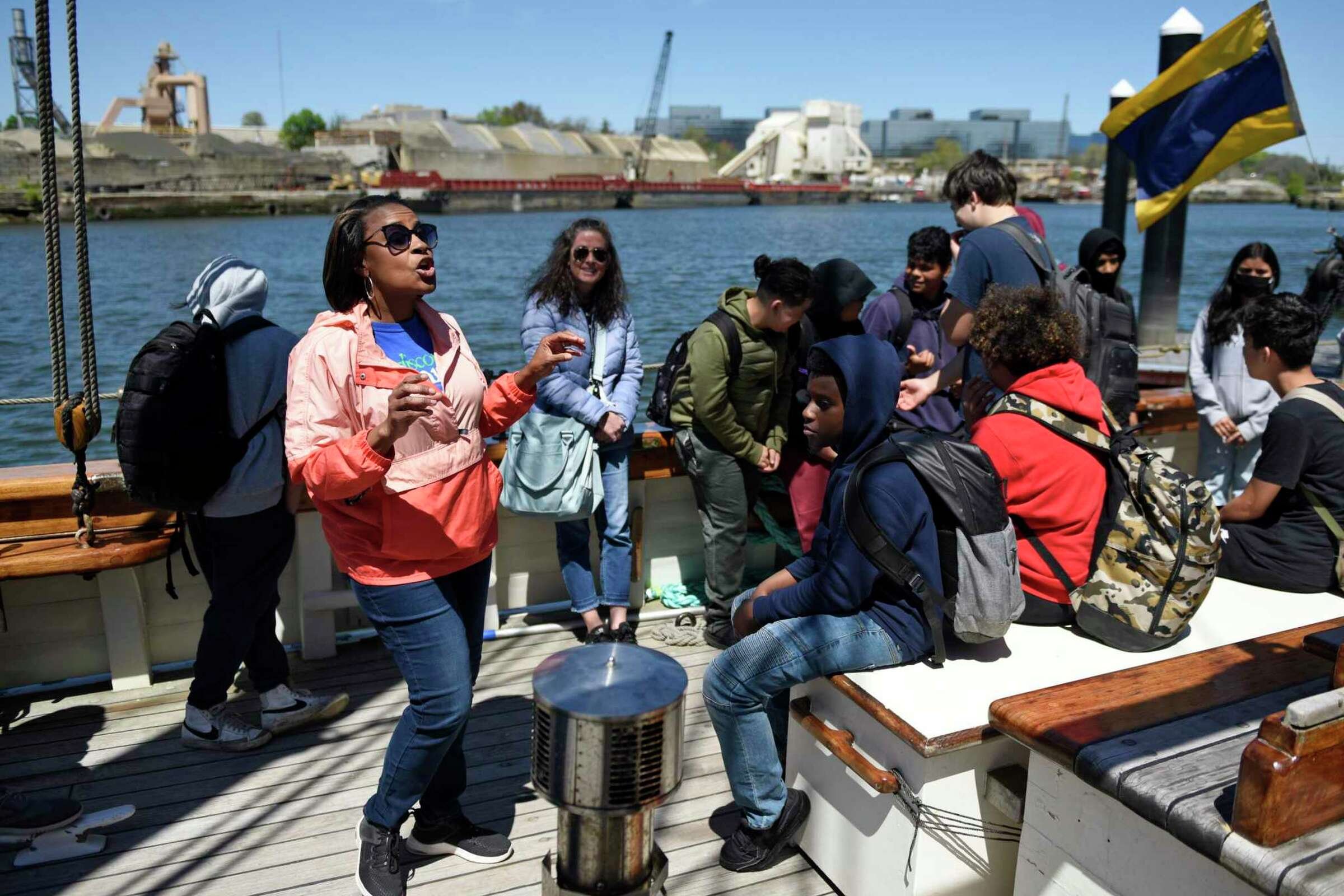
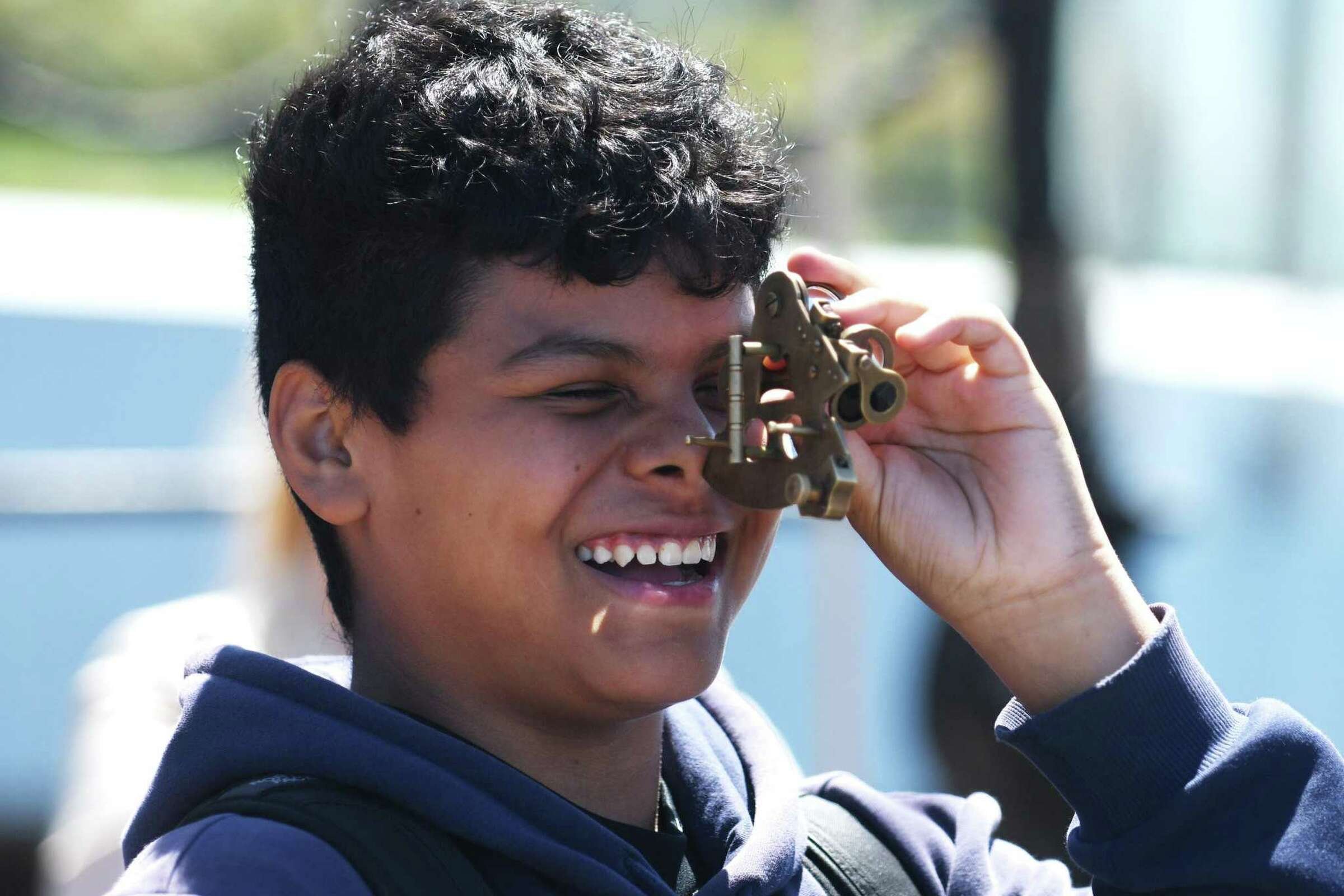
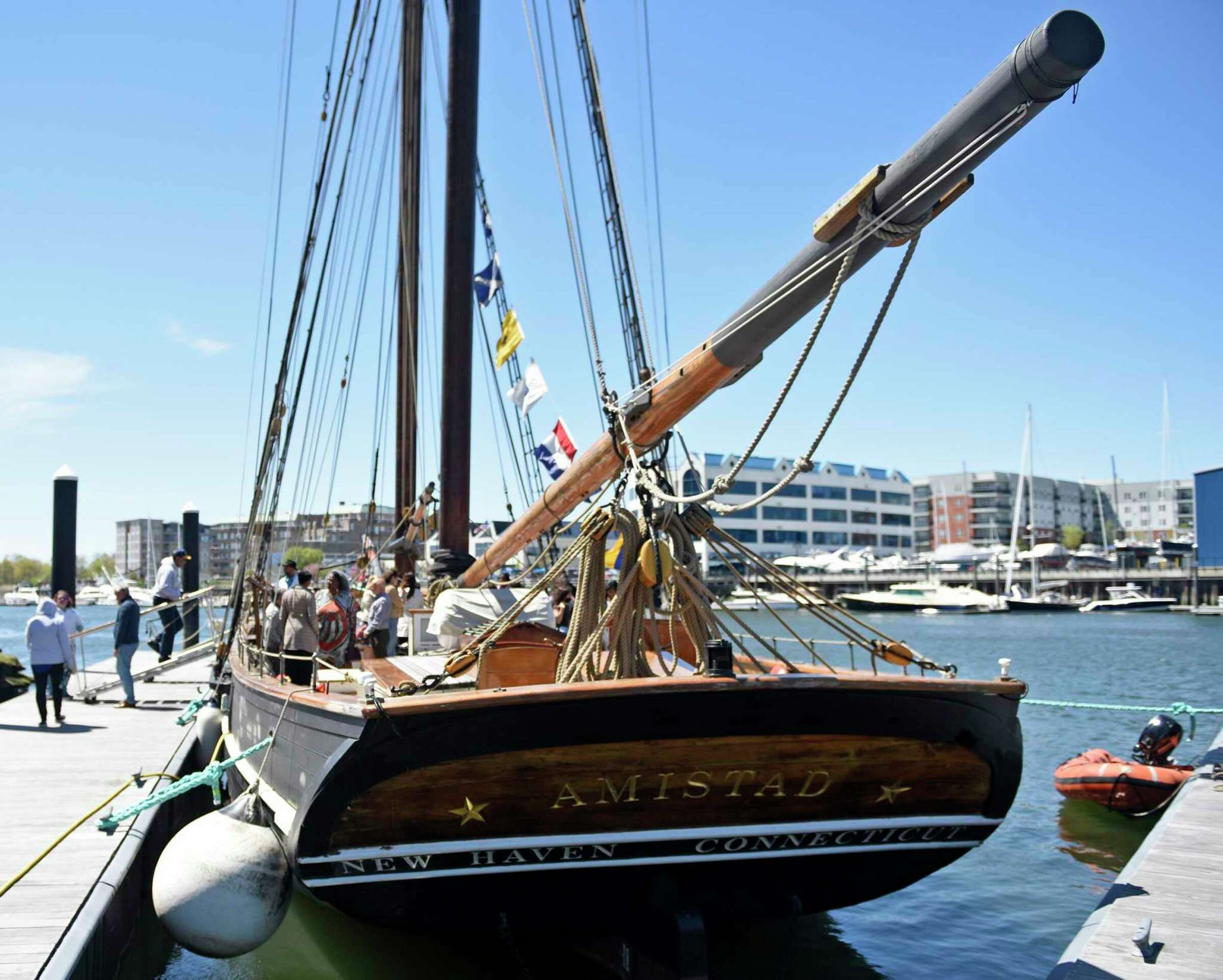

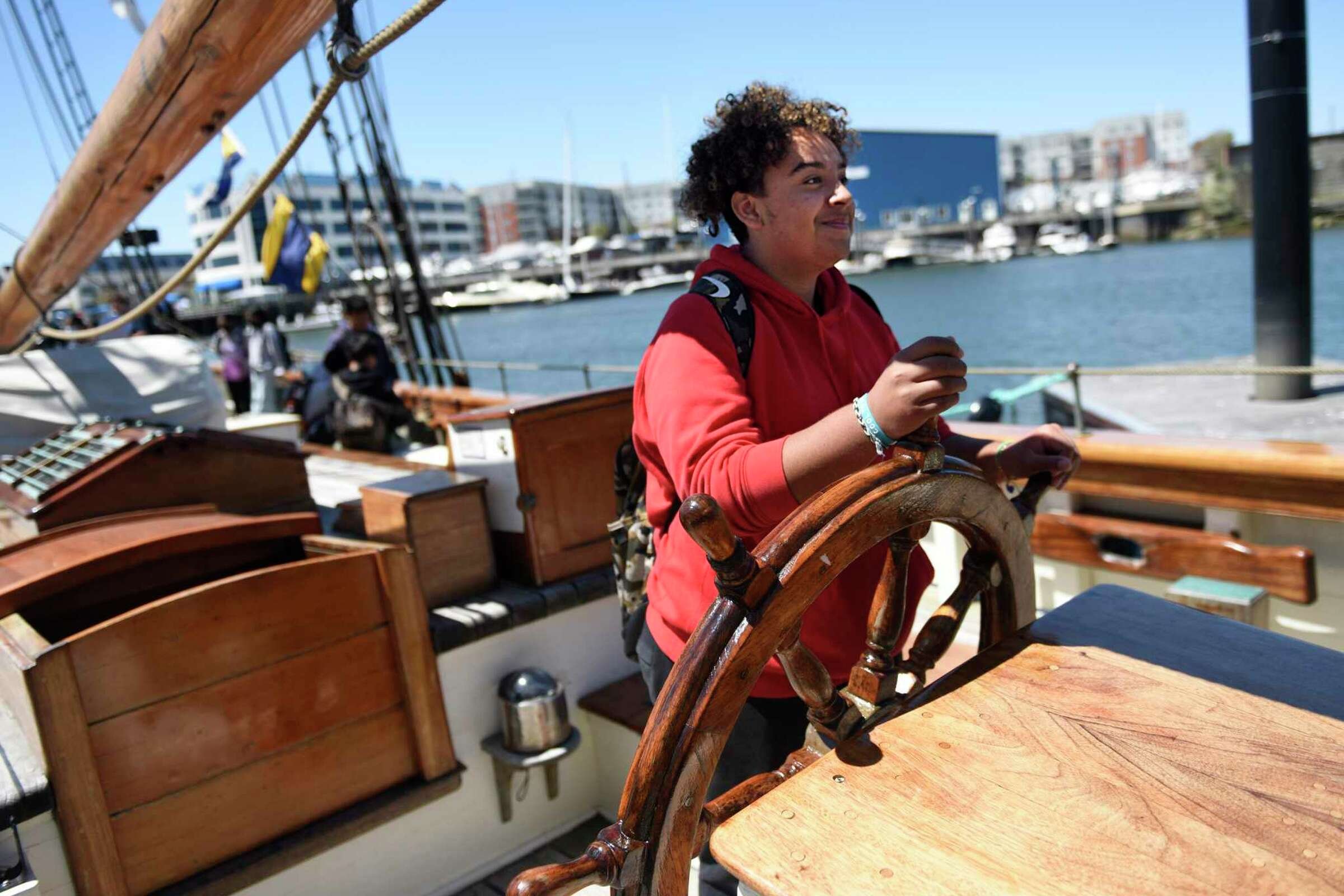


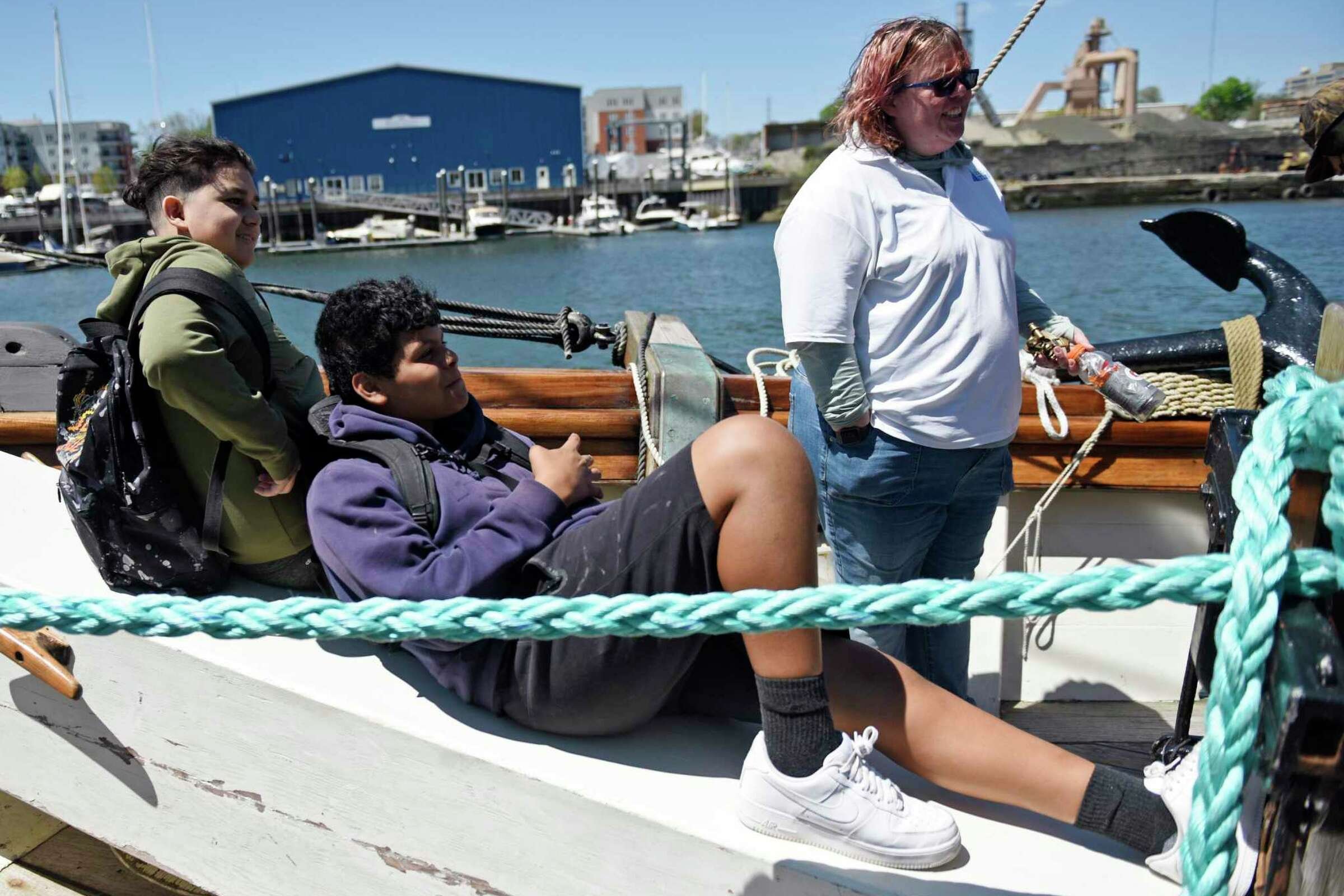
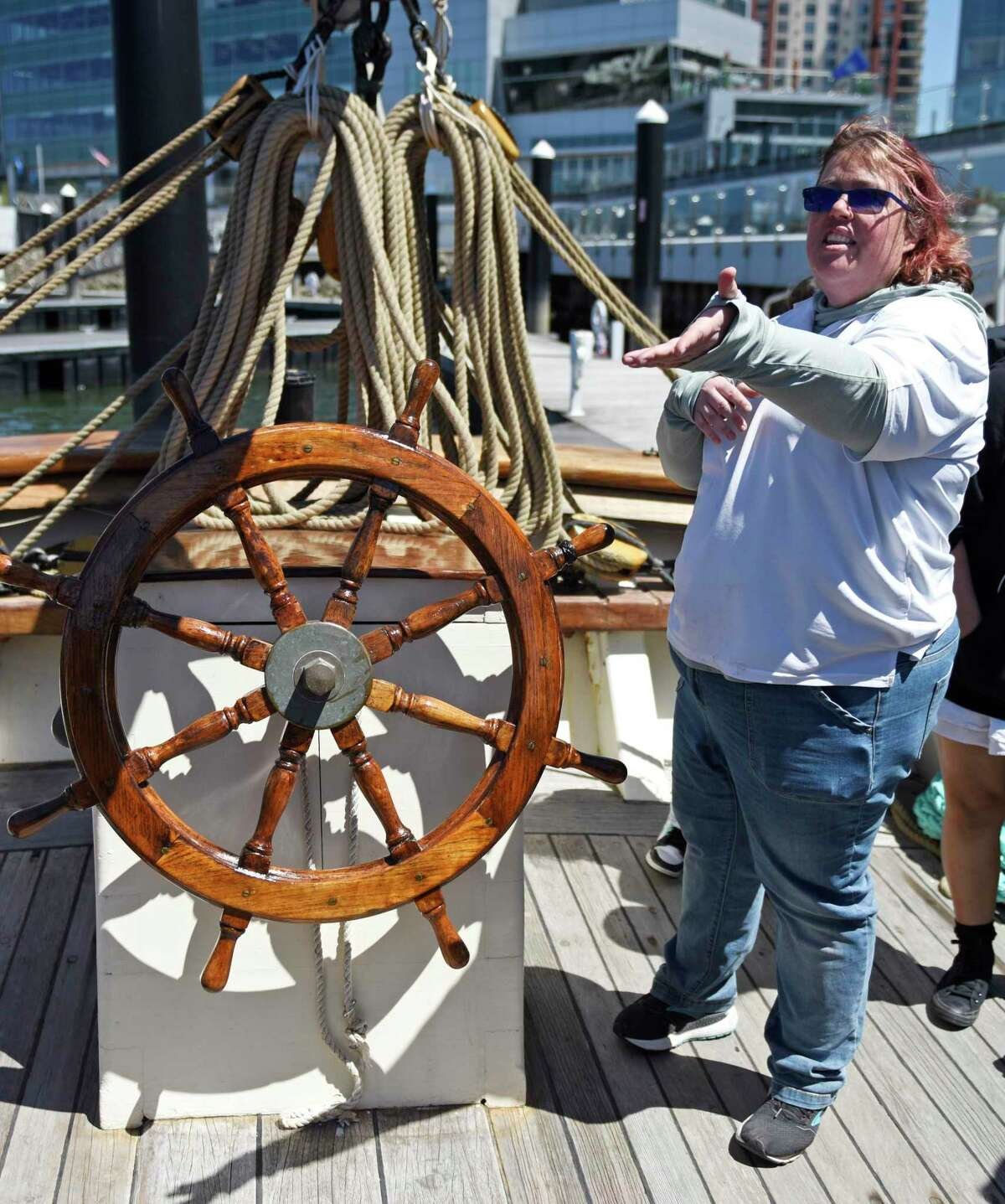
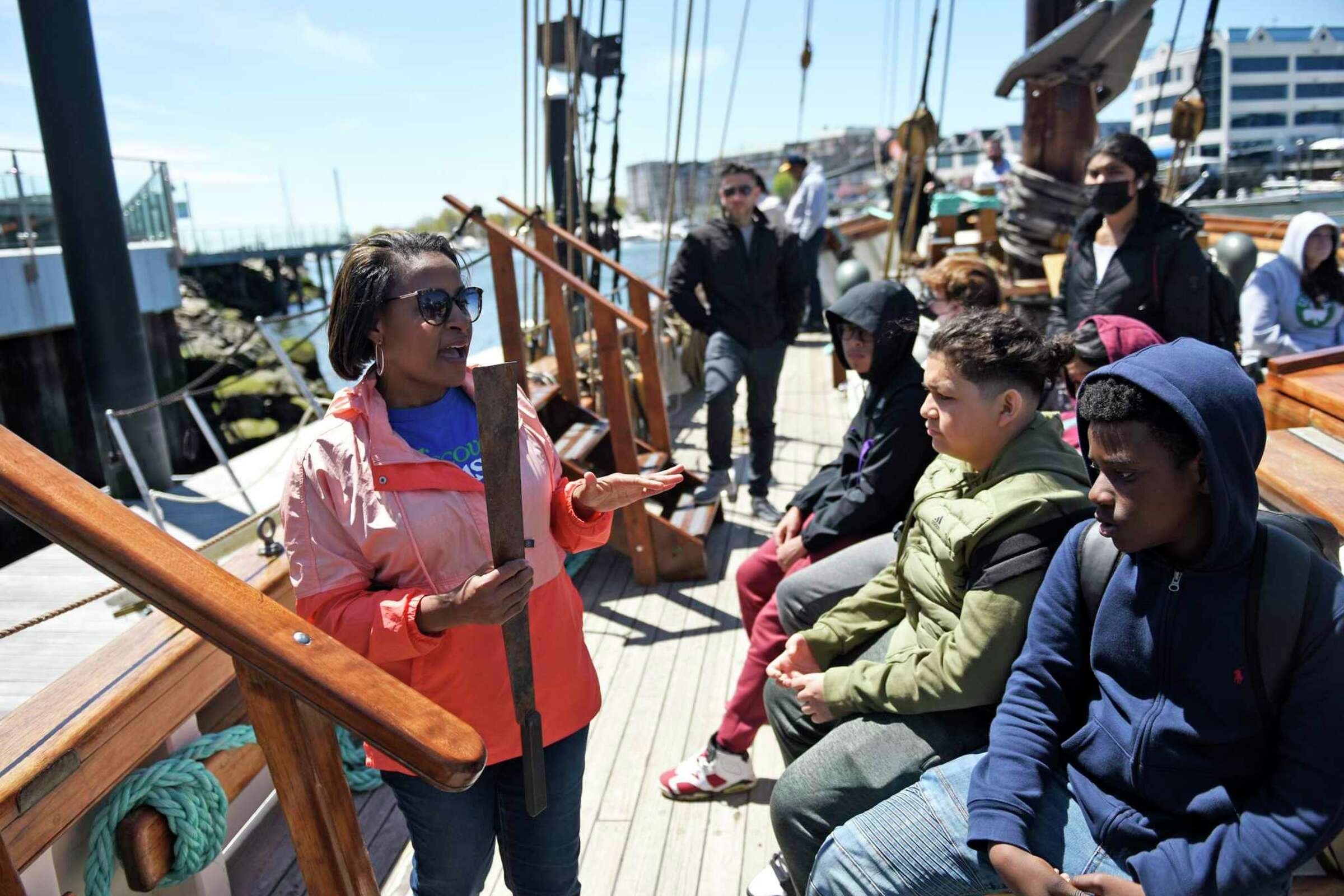
STAMFORD — Sneakers clattered onto the massive wooden boat parked in the Harbor Point Marina, and a hoard of middle schoolers immediately filled every empty space.
Packs of teens peered over the side into the Long Island Sound, gawked at the flags flapping in the coastal breeze and squeezed onto every perch on a full-sized replica of the historic slave ship Amistad on Monday.
Over the past two years, field trips have been scarce — nonexistent, even — but the city’s school district promises that every year moving forward, Stamford’s 1,250 eighth grade students will huddle onto the storied 19th century schooner to learn about the history of racial discrimination and social justice through its lens.
Stamford Public Schools last week debuted a long-term partnership between the district and a New Haven-based nonprofit dedicated to teaching students about the 1839 Amistad Uprising and the subsequent U.S. Supreme Court decision that delivered 53 kidnapped Africans back across the ocean.
“One of the most important things we as educators can do is look for ways to make learning engaging, exciting and interesting,” Stamford schools Associate Superintendent Amy Beldotti said in a press release. “This partnership achieves that goal.”
The district announced in the release that eighth graders from all of Stamford’s middle schools will take part in the program. The city’s school district is the first to launch a continued effort with Discovering Amistad, according to its executive director Paula Mann-Agnew.
Beyond the partnership, the Amistad is open to the public. The replica will remain on display at the marina, open for free tours, from noon until 4 p.m. May 14 and 15.
A story of enslavement
The Amistad rebellion’s story has been immortalized by both history books and Hollywood. As lead educator Chris Menapace tells it, “the homicide rebellion that began on the ship in 1839 links back to West Africa.”
From present-day Sierra Leone, Portuguese slavers purchased hundreds of kidnapped Africans. By 1839, the international slave trade was already illegal — meaning people could not be stolen and shipped across the ocean — but still thriving, according to Menapace. Regardless, ship owners brought the Africans to Cuba.
Spanish plantation owners Jose Ruiz and Pedro Montes purchased 53 Africans to work on sugarcane plantations in eastern Cuba. But the night after loading them onto their ship, the Amistad, the kidnapped Africans, led by Sengbe Pieh, seized the ship in a revolt, killing the captain and a cook in the process. The Africans spared Ruiz and Montes to help them navigate back to West Africa.
“But instead, Ruiz and Montes, using their own navigational knowledge, (brought) them to Long Island, where they are captured by the U.S. Navy,” Menapace said. From there, the Amistad’s history becomes intertwined with Connecticut’s. The Africans are shipped to New London and then imprisoned in New Haven, where they find an ally in abolitionist groups who connect them with a translator.
Through two court fights — one before the U.S. Supreme Court — the Africans maintain “they are natives of Africa and, therefore, illegally enslaved.” Their captors instead argued that the group was born into slavery in Cuba, making their slavery legal. Though the court ultimately sided with the “Amistad Africans,” as Discovering Amistad educators call them, it still took another year for them to arrive back in Sierra Leone.
Only 35 of the original kidnapped group of 53 survived and returned.
From the schooner to the schoolhouse
Menapace and his colleagues, like fellow educator Heidi Slaney, teach the kids about the Amistad story across two classroom lessons and one trip to the boat. But the history lesson isn’t the only point of the excursion.
“Our mission has always been to concentrate on three themes: dehumanization, resistance and legacy,” Menapace said.
The children discuss modern day examples of the first two themes, all in pursuit of answering one question, according to Lori Rhodes, who leads curriculum and instruction in the city’s middle and high schools: “Has equality in the U.S. changed since then?”
On that question, the students are inconclusive.
“Somewhat,” Nasir Dunlap, 14, said while leaning against the ship wall. That gap between how people of color are treated in this country and how their white counterparts are feels tangible to him, he said, but he can’t decide how big it is yet.
Vinny Petruso, 13, is on the same page. “When you think about how people treat people of color, it’s not the best,” he said.
Irrespective of how they interpret the present day, the students understand how grave the violence against the Amistad’s captives was, something the educators say the “floating classroom” drives home.
”This boat is scary,” another student, Fanel Medina, said to educator Slaney as she taught Medina how the ship is steered.
Medina peered down into the replica Amistad’s hull.
”People used to be down there, getting whooped,” he added, before running off to join his classmates.
veronica.delvalle@hearstmediact.com
Source: https://www.stamfordadvocate.com/news/article/Slave-ship-Amistad-helps-Stamford-middle-17160613.php

